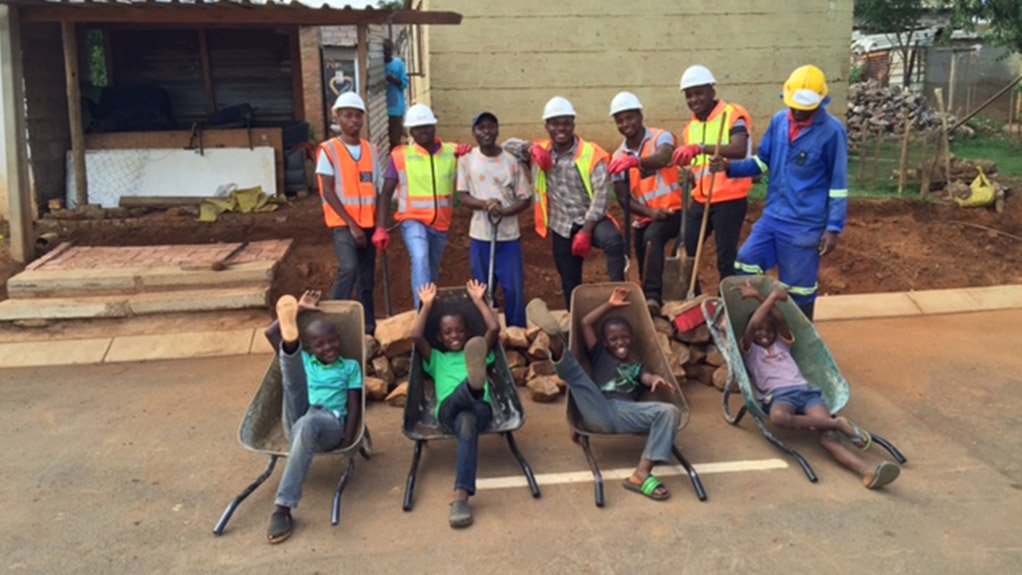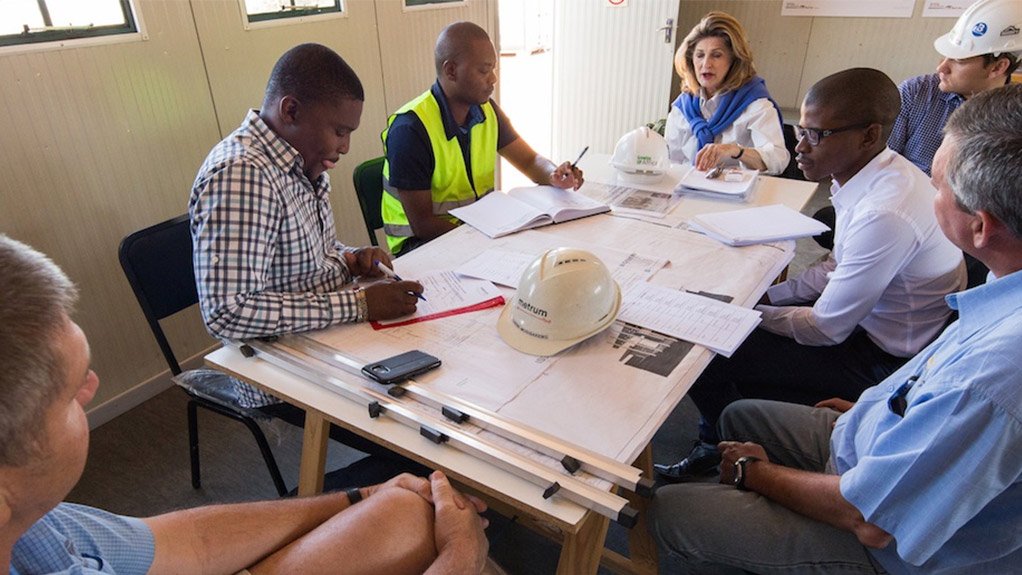The new 1 800 m² multipurpose education campus that is being constructed in Soweto is expected to open its doors by December 2016.
The education campus building, designed pro bono by New York-based architect William Reue, will include a suite of flexible multipurpose classrooms, a large auditorium, a cafeteria inte- grated with a “teaching kitchen”, and adminis-trative areas.
“The concrete building structure was a prag-matic response to community needs and one that can be built using materials and technology provided by committed partners of the Growing Up Africa (GUA) initiative,” he says.
The structural aspects of the building – the foundation, columns and roof – will be concrete. Sandbag wall-infill, from green building supplier African Olive Concepts, with punched windows, will be used for select exterior walls. The remaining walls of the building envelope will be a combination of masonry block infill and an exterior glazing system that uses an exterior solar-shading louvre system.
African Olive Concepts director Andy Deftereos notes that the sandbag wall-infill will have a positive economical and environmental impact by creating jobs for unskilled labour in the community. Sand is a natural resource that requires no energy for processing or chemical inputs. Contrary to most other building material, there is no need to process the sand.
“There is no energy consumption for burning bricks or producing cement. Negligible energy is required for making up the polypropylene bags. The same is true for the metal used to construct the ecobeams resulting in a positive impact on the environment, while the carbon dioxide emissions for 1 m2 of sandbag wall drops by more than 90%, compared with a conventional brick wall,” he says.
The skilled labour required for this form of building is an engineer, architect, plumber, electrician and plasterer. All other aspects can be completed by unskilled labour creating jobs and skills transfer.
For such projects, GUA depends on 80% in-kind sponsorships, which covers all the material needed to complete the project.
Some of the major in-kind contributors to this project are Basil Read, which completed the bulk earthworks on the project; C-PRO, Group Five and Barrow Construction, which completed the superstructure; Govender Glass & Aluminium, which is working closely with African Olive Concepts with regards to the integrating of the glass into the walling system; and Barloworld, Talisman, Kyasands and Xavier, Active Hire and Hire All, which are providing all of the hire equipment.
Other contributors include TIBER; Heidelberg Clay Brick and Sand; Builders Warehouse; Gomes; Geberit; Brencon Plumbing; Spoormaker & Partners; Boogertman & Partners Architects and SMEC.
“Our work is not just about good design that addresses the needs of an end-user; it is about collaboration and sharing with the people who live in the communities where we build. They are as important as the bricks and mortar we build with,” says GUA CEO and founder Deborah Terhune.
The Devland project also invites engineering students to gain on-the-job training and experience. Terhune says practical experience is valuable, as classroom-based teaching does not fully prepare students for all the aspects of working on site.
Student involvement is integral to GUA’s mission of self-empowerment, and the organisation has worked with university students from around the world on its projects.
The Soweto project has benefited from the contributions from students and college interns from the universities of Johannesburg, the Witwatersrand and Texas; Parsons New School for Design; Cornell University; and PRATT institute, which is volunteering its services in engineering and design. GUA would love to see more South African students getting involved in the project.
Further, the association also creates jobs through projects, such as this one, to alleviate unemployment in the country, Terhune points out. Unskilled labourers, who are mostly part of the community where the project is being built, earn an income while working alongside professionals.
GUA is also paving sidewalks around the cam-pus and helping the community with assistance, tools and material to upgrade their homes, Terhune adds.
Upon completion of the current project, GUA will have completed buildings in South Africa worth more than R50-million, with- out a set budget and with very little cash.
Edited by: Zandile Mavuso
Creamer Media Senior Deputy Editor: Features
EMAIL THIS ARTICLE SAVE THIS ARTICLE
To subscribe email subscriptions@creamermedia.co.za or click here
To advertise email advertising@creamermedia.co.za or click here















